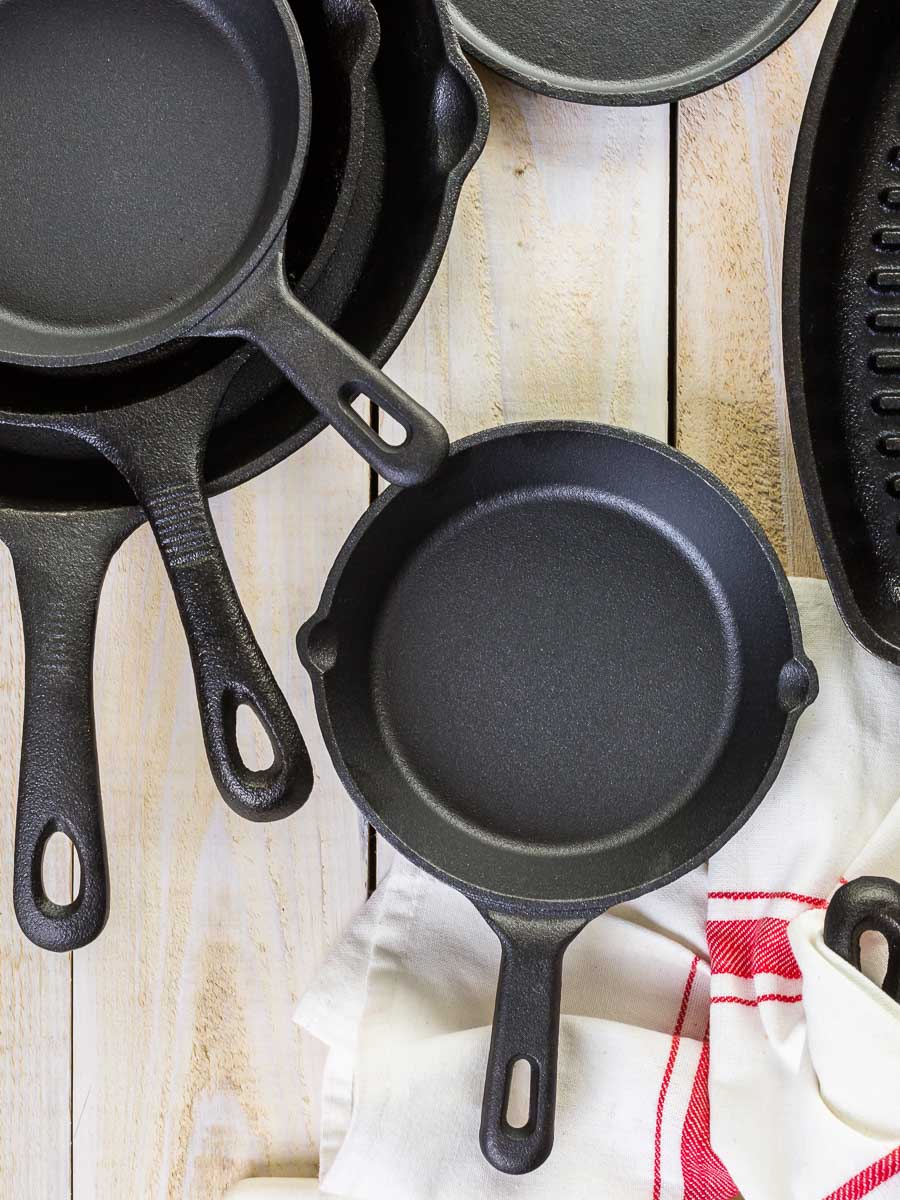Cast iron skillets are versatile and deliver restaurant-quality results at home. However, their unique properties often come with a question: how do I clean them properly? While cast iron requires a slightly different approach than your average pan, the process is surprisingly simple and straightforward.
You don’t need harsh detergents and abrasive scrubbers. With just a few basic tools you can keep your cast iron skillet in pristine condition, so it delivers delicious meals for years to come. This guide will walk you through the proper cleaning techniques, dispel common myths, and leave your cast iron looking and performing its best.
🗝️Key Takeaways
- Cleaning Technique: Cleaning a cast iron skillet is a straightforward three-step process: wash with hot water, dry thoroughly, and season.
- Durability and Maintenance: Cast iron skillets are known for their durability and improve with use.
- Avoid Harsh Methods: Avoid using abrasive scrubbers and harsh detergents. Dishwashers and metal utensils could damage the skillet.
- Seasoning Importance: Regular seasoning after each use is essential for building and maintaining the non-stick surface that cast iron is famous for.
As an Amazon Associate I earn from qualifying purchases. Read my disclosure policy.
🧼How to clean a cast iron skillet in 3 easy steps
Cleaning cast iron is an easy three-step process, but you do need the proper technique and tools lest your beautiful pans incur any damage.
Treat it right and your skillet will last a lifetime and likely be in good enough condition to pass on to the next generation. That’s how tough this kitchen equipment is. Cast iron’s durability, longevity, and plastic-free nature make it a sustainable choice worth considering.
Unlike any other cookware, cast iron can get better with age. It also holds a nice, even heat, making an excellent tool for quick and easy skillet dinner meals.
“Cleaning a cast-iron skillet is not as scary as it seems. If the skillet is properly seasoned, there’s not much you can do in normal cleaning that will ruin the seasoning since the seasoning oil actually bonds with the metal to form a seal. Even dish soap can’t break through that bond.”
— Robin Donovan, All Ways Delicious
However, cast iron isn’t indestructible. For example, it’s not dishwasher safe, nor is it scratch-proof, and it will rust if not attended to correctly.
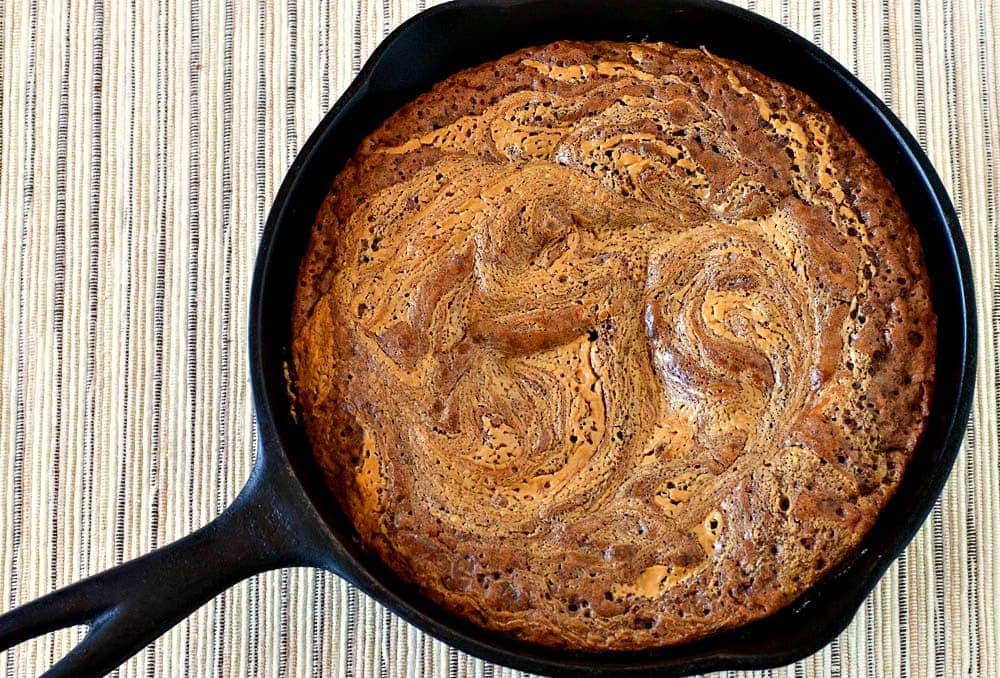
🧽Step 1: Wash the skillet
When it comes to cleaning cast iron skillets, hot water is the go-to resource for getting the job done. Begin by cleaning the pan out as best you can with a wooden or silicon spatula, and save leftovers in food-safe containers.
Next, place the pan under hot water and rinse off as much remaining food as possible.
You can also pre-wipe the pan, as Lara describes:
“After using a cast iron skillet, I like to let it cool down a bit and then wipe out the bits of food and grease with a paper towel or damp cloth.”
— Lara Clevenger, LaraClevenger.com
Then, hold a scouring pad or cleaning brush specifically for cast iron and gently scrub the surface as needed. Typically, you only need to scrub for a minute or so before the pan returns to a spotless state.
Is it ok to use soap on cast iron?
A controversial atmosphere surrounding using soap on cast iron gets heated on both sides. Some say yes, while others say no.
America’s Test Kitchen sets the record straight by announcing: Yes, you can use soap on cast iron. That being said, the statement assumes you’re working on a well-seasoned pan and choosing a mild dish soap.
Chances are, if you’re using a new pre-seasoned pan or have built up a good seasoning yourself, then it’s safe to wash gently with a mild dish cleaning agent.
More often than not, using hot water and a small amount of dish soap combined with a soft sponge is sufficient.
🧻Step 2: Dry the skillet
Drying the skillet is the primary way we preserve long-term quality and keep it free from rust. Set the pan over medium-high heat until the water evaporates off the surface.
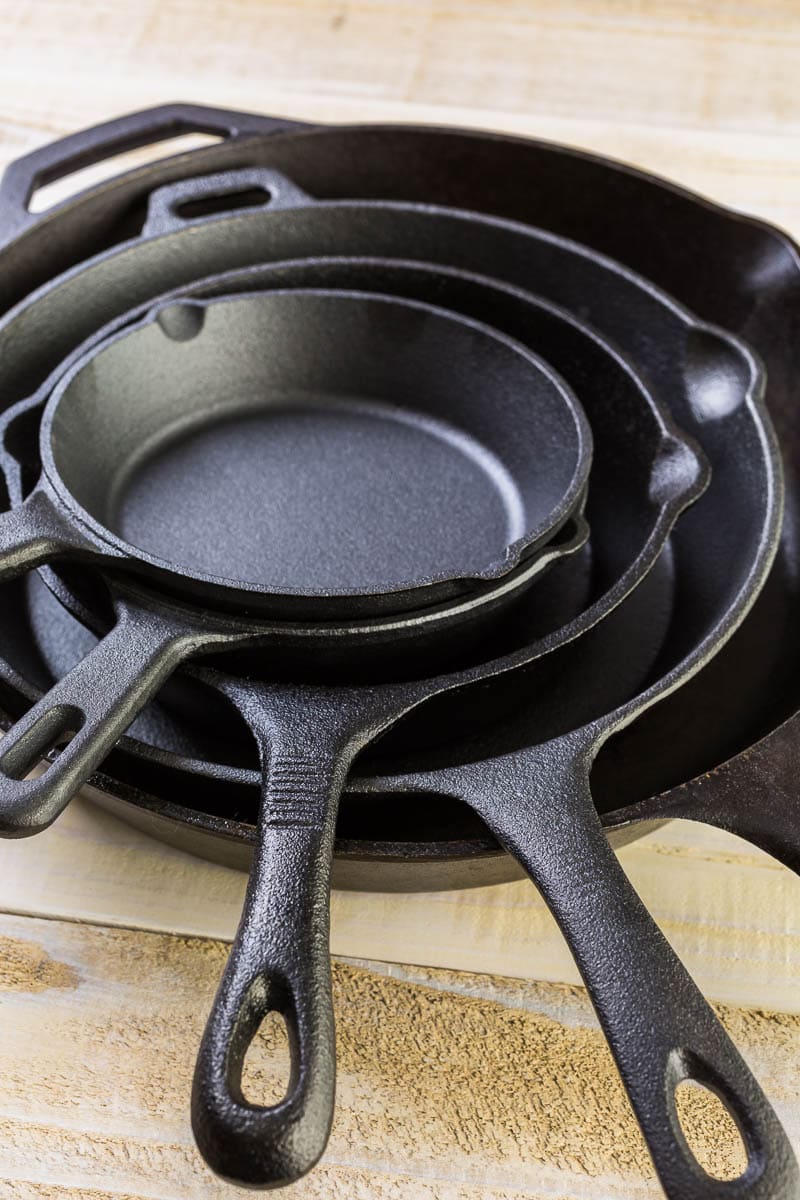
🥘Step 3: Season the skillet
Finally, rub oil over all surfaces, inside and out. The process is as simple as it sounds:
“After I wipe the skillet dry with a dish towel, I put it on the stove over medium heat. Then, once it’s totally dry, I pour a little cooking oil in, and wipe that around the skillet with some paper towels. I can have cast iron cleaned and put away in less than 5 minutes!”
— Sara Nelson, Real Balanced
This seasoning method effectively creates a bond with the iron, thereby creating a natural nonstick coating that is so closely associated with cast iron cookware. It’s precisely this nonstick coating without chemicals that we’re after because cast iron cooking is great for just about anything from cabbage stir-fry to fish and even eggs.
The pan will be exceptionally hot after drying it out. Choose any cooking fat from lard or tallow to olive or flaxseed oil and wipe it around with a paper towel.
⭐Don’t Miss These Cast Iron Skillet Recipes
- Taco Rice Skillet: A one-pan meal featuring ground beef, rice, and taco seasonings, garnished with cheese and fresh toppings like lettuce and tomato.
- Cast Iron Skillet Pizza: Homemade pizza cooked in a cast iron skillet for a crispy crust, topped with your favorite sauce, cheese, and toppings.
- Chocolate Chip Skillet Cookie: A giant cookie baked in a skillet, loaded with chocolate chips and served warm, often topped with ice cream.
- Skillet Pork Chops with Stuffing: Juicy pork chops seared and cooked in a skillet, accompanied by a savory herb stuffing, making it a comforting one-pan meal.
- Arugula and Sausage Skillet: A quick and easy dish combining spicy sausage with peppery arugula, ideal for a hearty weeknight dinner.
- Chocolate Peanut Butter Skillet Cake: A rich and gooey dessert combining chocolate and peanut butter baked into a cake.
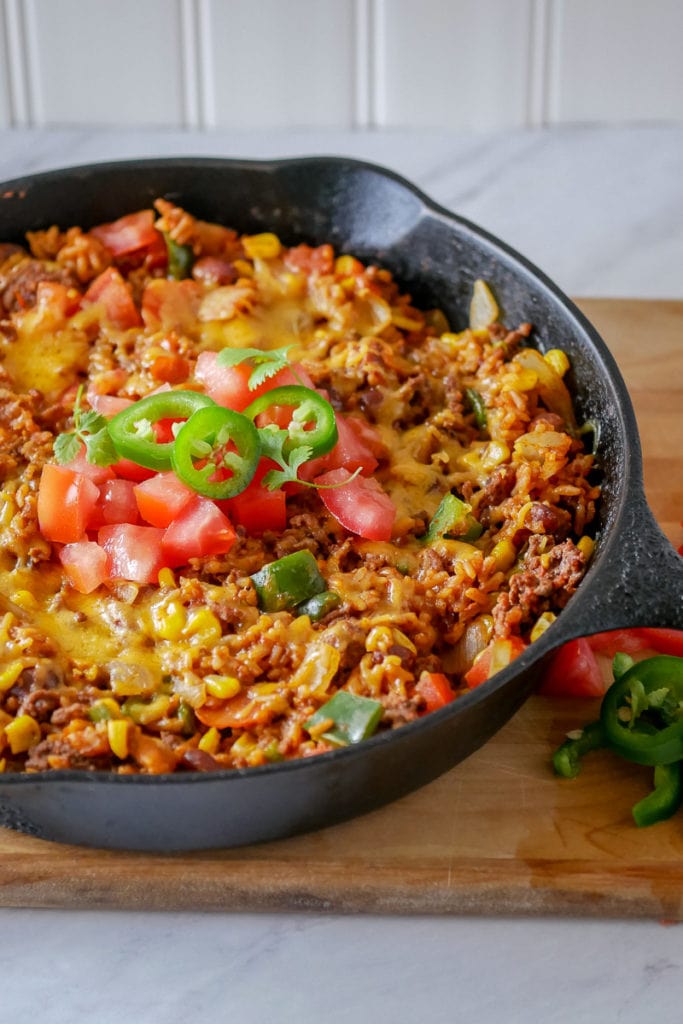
🍳What to do with grimy pans?
You might be tempted to soak the pan in water as a way of softening up crusted and stuck-on food bits. Even though this works with regular dishes, please don’t make it a practice with your cast iron.
Instead, add water to the pan and heat it on the stovetop. Scrape the bottom and sides with a wooden spatula and continue heating until the water boils. Don’t risk scratching the coating with metal utensils.
For seriously crusted skillets, spread 1 cup of salt on a still-warm pan. Then, likewise, fold a towel and scour the trouble zones. Finish off with a final rinse, and dry and season like normal.
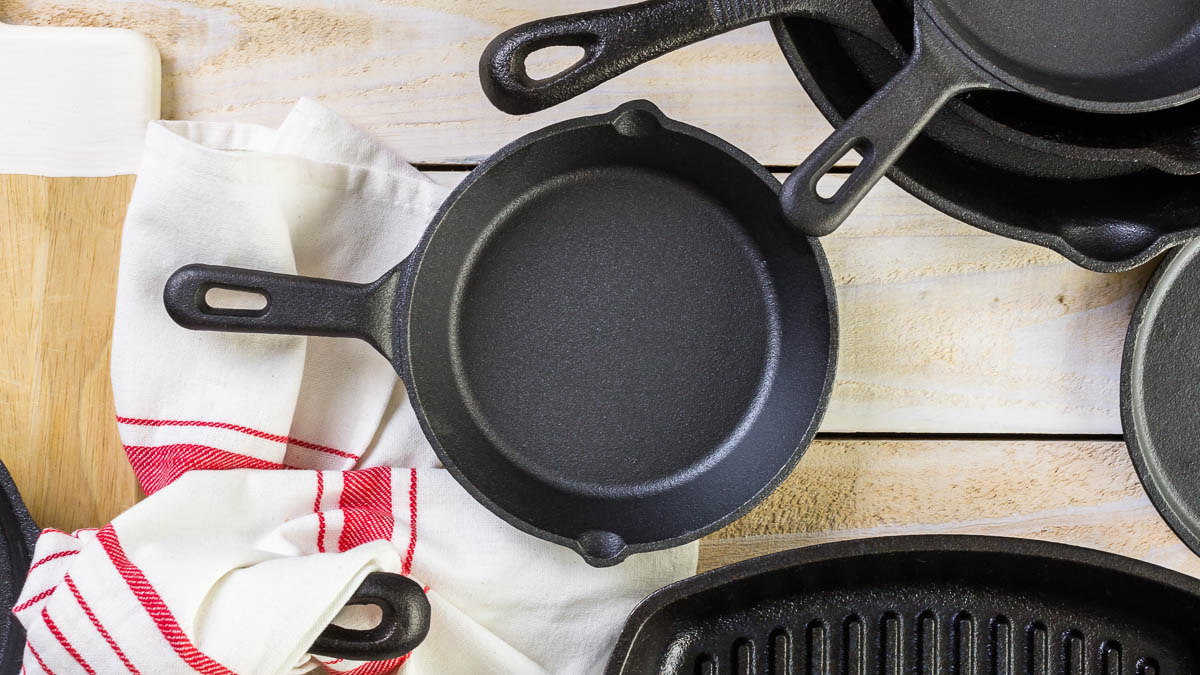
✔️Long-term care for cast iron skillets
The key to a truly non-stick, cast iron skillet is frequent seasoning. Ideally, give your pan a quick reseasoning after each use. This helps build up that smooth, slick surface we all love.
Remember, less is more with oil – too much can make things sticky. If that happens, just wash it with hot water, dry it thoroughly, and re-apply a thin layer of oil for the next cook.
Be consistent by following the simple steps of washing, drying, and seasoning a cast iron skillet, and you’ll love having a clean and reliable piece of cooking equipment for all your one-pan meals and culinary needs.
This article originally appeared on Food Drink Life.


